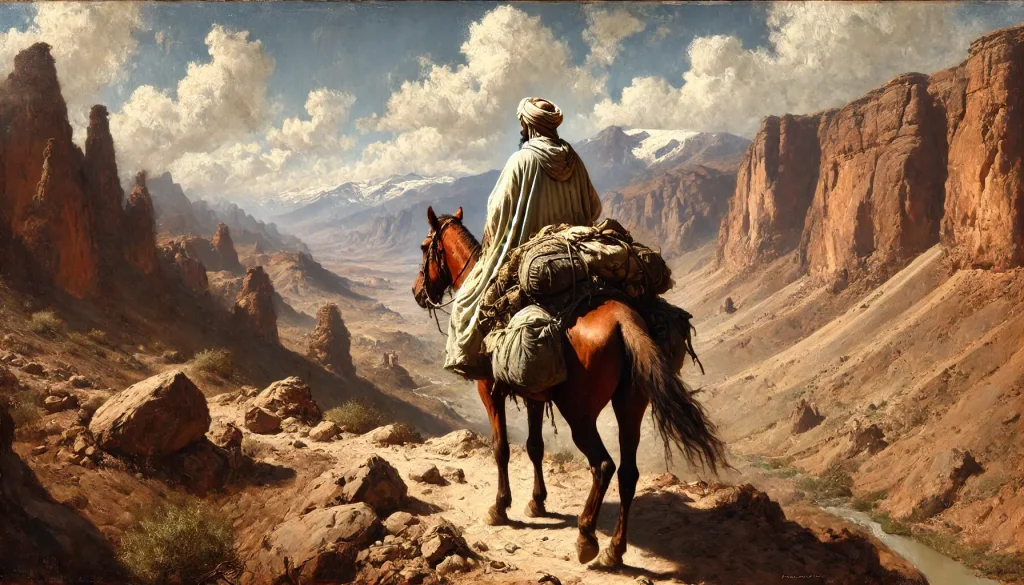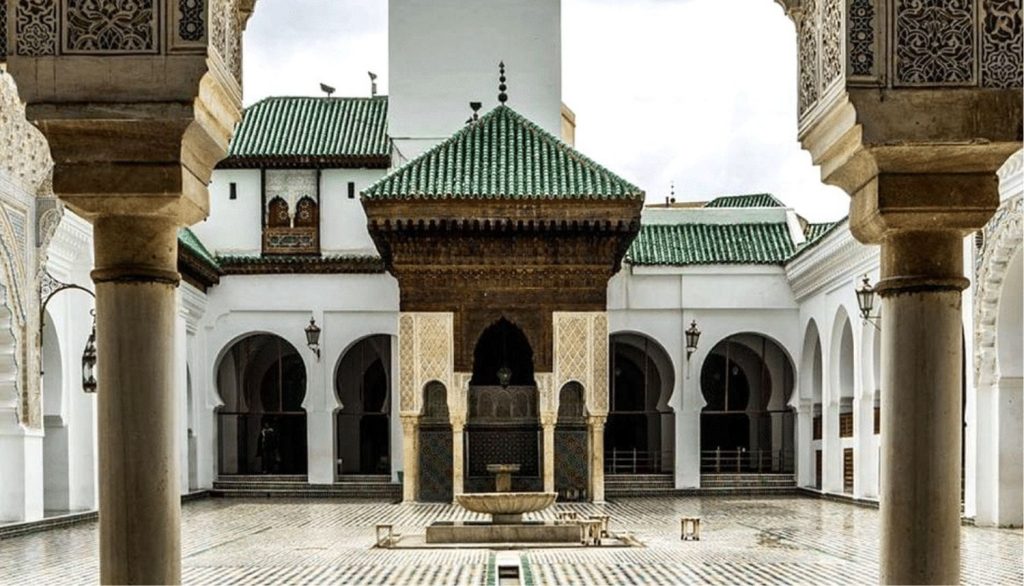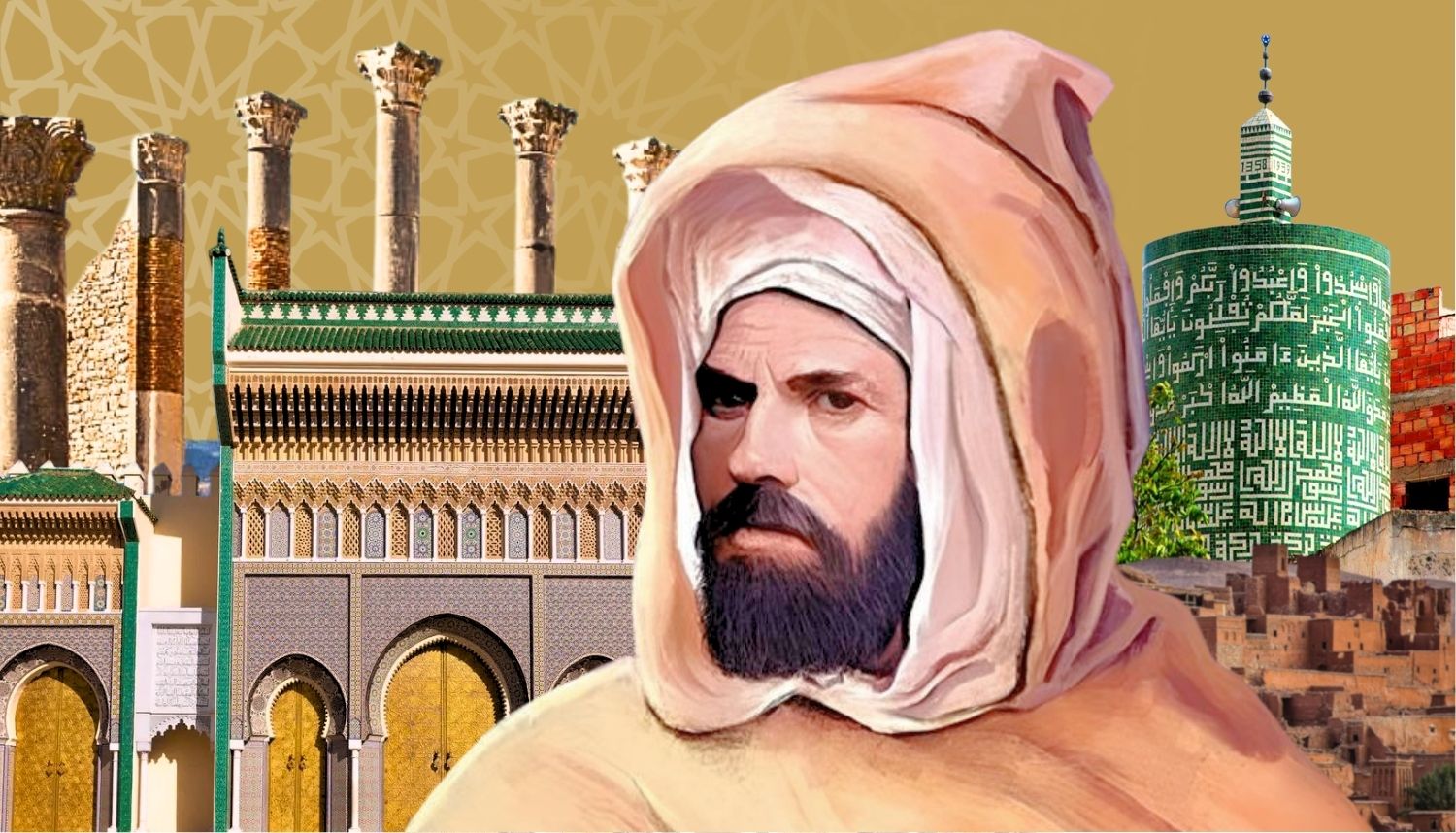Moulay Idriss I, a descendant of the Prophet Muhammad, fled Abbasid persecution and founded Morocco’s first Islamic state in 789 AD. His journey from Mecca to Volubilis marked the beginning of Moroccan unity, identity, and independence under his noble leadership.
Birth and Ancestry
Moulay Idriss I, born Idriss ibn Abdallah al-Kamil, was a direct descendant of the Prophet Muhammad. His lineage traced back to Ali ibn Abi Talib and Fatima al-Zahra, giving him a noble and religiously significant heritage. Coming from the Ahl al-Bayt (the Prophet’s family), he was considered a legitimate leader by many who opposed the ruling Abbasid Caliphate.
Early Life and Conflict with the Abbasids
Idriss I lived during a time of great political upheaval in the Islamic world. The Abbasid Caliphate, which had overthrown the Umayyads in 750 AD, faced continued resistance from the descendants of the Prophet. Idriss I, along with other members of the Hashemite family, played a key role in leading revolts against the Abbasids, who were seen as unjust rulers.
One of the most crucial moments in his early life was the Battle of Fakh (786 AD), where his forces clashed with the Abbasid army near Mecca. This rebellion, led by Husayn ibn Ali, was crushed by the Abbasids, resulting in the massacre of many of Idriss’s relatives. As one of the few survivors, Idriss fled, seeking refuge far from the reach of the Abbasids.

Escape to North Africa and the Journey to Morocco
Fleeing the Abbasid forces, Idriss I, accompanied by his loyal servant Rashid al-Urbi, embarked on a perilous journey. He first sought refuge in Egypt, where he was aided by Shiite sympathizers. However, fearing Abbasid spies, he continued westward to Ifriqiya (modern Tunisia and Algeria).
His journey took him through the Aghlabid-controlled Kairouan and into Tlemcen, where he found temporary shelter. Eventually, he arrived in Morocco, where he was warmly welcomed by the Awraba Berber tribes of Walili (Volubilis), near present-day Meknes. The Berbers, disillusioned with foreign Arab rule and eager for an Islamic leader with noble lineage, pledged their allegiance to him in 789 AD.

Founding of the Idrisid State
With the support of the Berbers, Idriss I established the first Islamic state in Morocco, marking the beginning of Moroccan independence from the Abbasid Caliphate. His leadership was both spiritual and political, as he took on the role of Imam, ruler, and military commander.
His new kingdom quickly gained strength as various Berber tribes united under his rule. The Awraba, Zenata, and Sanhaja tribes formed the backbone of his forces, helping him expand his influence across the region. Idriss I sought to spread Islam further into the Atlas Mountains and western Algeria, integrating more tribes into his newly founded state.
The Perilous Journey
From Arabia to Morocco:
The Great Escape
Idriss I fled the Abbasids after the Battle of Fakh, traveling through Egypt, Kairouan, and Tlemcen. With his loyal companion Rashid, he found refuge in Morocco, where the Berbers welcomed him and pledged their allegiance, marking the start of a new era.
The Birth of a Kingdom
Uniting the Tribes,
Establishing a Nation
In 789 AD, Berber tribes declared Idriss I their leader, making Morocco’s first independent Islamic state. He unified diverse groups, spread Islam, and strengthened his rule, laying the foundation for a dynasty that shaped Morocco’s future.
The Betrayal and the Fall
A Deadly Plot,
A Legacy That Endured
An Abbasid agent disguised as a scholar gained Idriss I’s trust and poisoned him using scented oil in 793 AD. Though he was assassinated, his legacy endured through his son, Idriss II, who strengthened the Idrisid state and continued his father’s vision.
Early Military Campaigns and Expansion
To consolidate power, Idriss I launched a series of military campaigns. His forces successfully expanded their control over Tamesna, Tadla, and parts of the Atlas region, converting local populations to Islam. His biggest success was in Tlemcen, where the local ruler, Mohammed ibn Khazar, surrendered to him without resistance. This marked the beginning of the Idrisid expansion into Algeria, strengthening the young state’s presence in the Maghreb.
Marriage and Securing the Dynasty
As part of strengthening his rule and securing alliances, Idriss I married Kenza, the daughter of Ishaq ibn Mohammed, the leader of the Awraba tribe. This marriage solidified his ties with the Berbers, reinforcing their loyalty and ensuring a smooth succession.
Two years after the founding of the Idrisid state, in 174 AH (790 AD), Kenza became pregnant with Idriss’s son, Idriss II. This was a crucial event in Moroccan history, as the birth of Idriss II ensured the continuity of the dynasty. His future rule would play a major role in the expansion and establishment of Fez as the new capital of Morocco.

Assassination and the Abbasid Plot
Despite his success, Idriss I remained a threat to the Abbasid Caliphate, which sought to eliminate any rival Islamic rulers. Harun al-Rashid, the Abbasid Caliph, devised a plan to assassinate Idriss I to prevent the rise of a powerful independent state in Morocco.
To execute this plan, the Abbasids sent Suleiman al-Shammakh, an agent disguised as a poet and scholar, to infiltrate Idriss’s court. Over time, Suleiman gained the ruler’s trust, eventually offering him a bottle of perfumed oil laced with poison. As soon as Idriss inhaled the scent, he collapsed and later died in 177 AH (793 AD).
This assassination, however, failed to destroy the Idrisid state. Before his death, Idriss I had already laid the foundation for a strong kingdom, and his unborn son would continue his legacy.
Legacy and Lasting Impact
Although Idriss I ruled for only a short time, his contributions had a profound impact on Morocco:
- He established the first Islamic state independent of the Abbasids, creating the foundation for Moroccan sovereignty.
- He spread Islam among the Berber tribes, helping unify the region under a common religious and political identity.
- He expanded Moroccan influence into western Algeria, strengthening ties between North African regions.
- His legacy continued through Idriss II, who founded Fez in 808 AD, transforming it into a major intellectual, religious, and economic center.
- Today, his tomb in Moulay Idriss Zerhoun remains a major pilgrimage site, revered by many in Morocco and the Islamic world.
Traces of Idriss I: Landmarks & Legacy
Unraveling the Legacy of Idriss I
Why was Idriss I’s lineage important for his rule?
Idriss I was a direct descendant of Prophet Muhammad, making him a significant religious and political figure. His noble ancestry helped him gain legitimacy among the Berber tribes.
Why did the Berbers support Idriss I as their leader?
The Berbers saw in Idriss I a just and noble leader who could unite them under a strong, independent rule. They sought freedom from foreign Arab rulers and believed his lineage brought religious blessings.
How did Idriss I differ from the Abbasid Caliphate?
Idriss I was seen as a threat by the Abbasids because he represented a rival faction descended from the Prophet’s family. Some accounts suggest he had Shiite leanings, while others claim he aligned with Maliki Sunni Islam later in his rule.
What lands did Idriss I conquer and expand into?
He expanded his rule over Tamesna, Tadla, parts of the Atlas Mountains, and even reached Tlemcen in present-day Algeria. His military efforts unified Morocco under one rule for the first time.
How did Idriss II continue his father’s legacy?
Idriss II, born after his father’s assassination, later became ruler and founded Fez as Morocco’s cultural and economic capital. His reign solidified the Idrisid state, ensuring its survival.
Moulay Idriss I’s story is more than just history — it’s the beginning of Morocco’s identity as an independent nation. From his noble lineage to his courageous journey and lasting legacy, his impact is still felt today. If this story inspired you or taught you something new, we’d love to hear your thoughts! Share this article with others who love Moroccan history, and drop us a comment to tell us what fascinated you most.









